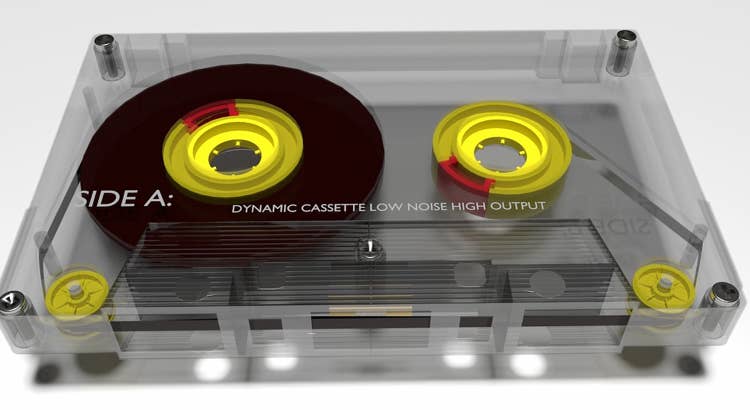The Enduring Legacy of Cassette Tapes: From Audio Storage to Modern Art
Cassette tapes, once a symbol of music and media during the latter part of the 20th century, continue to capture the imagination of both artists and tech enthusiasts. Though digital formats have largely replaced analog recordings, cassette tapes still hold an important place in our cultural history.
What Is an Audiotape?
Audiotape, also known as a cassette tape or compact cassette, is an analog magnetic tape used to store audio. Lou Ottens and his team at Philips developed this technology in the early 1960s.
- Cassette tapes are small, rectangular plastic shells containing magnetic tape wound between two spools.
- They were initially made for dictation machines but soon became popular for music, home recording, and data storage for early computers.
- Two main types exist: pre-recorded tapes and blank tapes for personal recording.
The Birth of the Cassette Tape
Philips introduced the compact cassette in 1962. At that time, the audio industry was dominated by bulky reel-to-reel recorders. Cassette tapes offered a smaller, more portable alternative.
- The original purpose was for voice recording and transcription.
- Each tape housed two stereo pairs or two mono audio tracks.
- Users played one set of tracks in one direction, then flipped the cassette to access the other set.
- Automated systems called “auto-reverse” later handled this flipping process electronically.
By the 1980s, cassettes were the world’s most popular audio format (RIAA, 2017).
Cassette Tapes and Transcription
Cassettes had a significant role in the transcription industry. Specialized devices, known as cassette transcribers, helped professionals translate spoken words into written text.
- Popular with doctors, lawyers, journalists, and researchers.
- Common features included foot pedals for hands-free playback control and tape counters for easy navigation.
- Affordable and widely available during the late 20th century.
The rise of digital audio files has improved the transcription process, making it faster and allowing the use of [automated transcription](https://gotranscript.com/automated-transcription-services) tools. Digital files are easier to share, store, and index, leading to increased accuracy and speed in transcription workflows.
Fun Facts About Cassette Tapes
Cassette tapes are rich in history, with several interesting facts worth knowing:
- Cassette tapes were created for voice dictation, not music.
- Over three billion cassette tapes sold worldwide from 1963 to 1988 (Forbes, 2017).
- A typical cassette tape can last between 10 to 30 years, depending on storage conditions.
- SFX Cassette became the first music magazine to release content on tape rather than paper.
- Sony stopped making its iconic Walkman cassette player in 2010.
Recently, cassette tapes have seen a revival, with new albums released in this format. Many young artists now offer their content on cassette alongside CDs and digital formats. Retailers such as Urban Outfitters stock cassette-based releases, proving that the format is more than just a memory.
Cassette Tapes as Art
Cassette tapes are not only enjoyed for audio—they also offer artistic inspiration.
- Old and damaged cassette tapes are repurposed by artists into creative works.
- Artists extract the magnetic tape and use it to form detailed portraits and sculptures.
- This practice is both eco-friendly and nostalgic, turning discarded technology into valuable pieces of art.
One notable artist, Erika Iris Simmons (known as iri5), creates stunning portraits of music icons such as Bob Marley, Jimi Hendrix, and Madonna using magnetic tape. These works connect the musician’s likeness with the very media that once played their songs. Simmons even collaborated on the music video for "Just the Way You Are" by Bruno Mars, adding a unique visual twist to the audio experience.
- Tape art not only recycles old media but can also pay tribute to the music and artists themselves.
- Some portraits feature musicians, shaped entirely from tapes of their own work.
The Future of Cassette Tapes
In the past 150 years, sound recording has shifted from wax cylinders to digital streaming, but physical formats like cassette tapes remain a source of nostalgia. While digital libraries with instant access to media are now standard, cassette tapes symbolize a period in audio history no longer present in daily life.
- Cassettes have earned their place in music history books, but they are not gone.
- New artists and collectors fuel a small but active market for tapes.
- In terms of transcription, cassette tapes now serve as reminders of how technology makes our lives easier and more connected.
Modern Transcription Solutions
Whether you’re preserving the past or embracing modern technology, transcription remains essential. Today, digital [transcription services](https://gotranscript.com/transcription-services) offer more speed and accuracy than traditional cassette playback.
- [AI transcription subscriptions](https://gotranscript.com/ai-transcription-subscription) provide automated solutions for fast, affordable results.
- [Transcription proofreading services](https://gotranscript.com/transcription-proofreading-services) ensure accuracy for important documents.
- [Text translation](https://gotranscript.com/text-translation-services) and [audio translation services](https://gotranscript.com/audio-translation-services) extend the reach of your content.
- [Closed caption](https://gotranscript.com/closed-captioning-services) and [subtitling services](https://gotranscript.com/subtitling-services) improve accessibility for videos.
- For those concerned about cost, review [transcription pricing](https://gotranscript.com/cheap-transcription-rates) and [captioning services pricing](https://gotranscript.com/cheap-captioning-rates).
You can [order transcription](https://gotranscript.com/upload/transcriptions) or [order captions](https://gotranscript.com/upload/captions) easily online.
Conclusion
Cassette tapes played a vital role in music, transcription, and creative art. While their golden age has passed, they inspire new forms of artistic expression and nostalgia-driven media releases. Today, modern transcription solutions from GoTranscript make it simple to convert cassette recordings to digital formats or transcribe audio with precision. Explore GoTranscript's full range of services to keep your audio content alive, accurate, and accessible in the digital age.



















 Verified Order
Verified Order